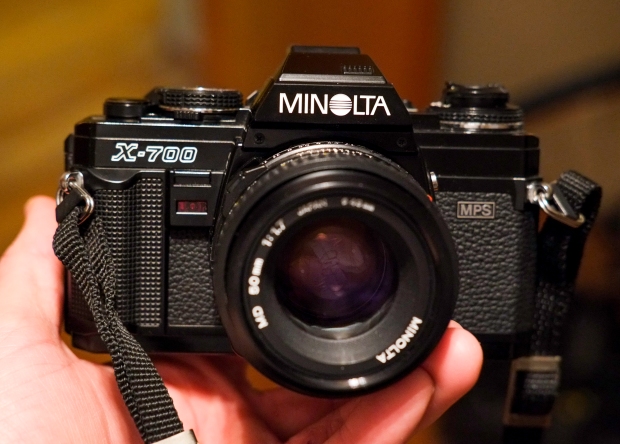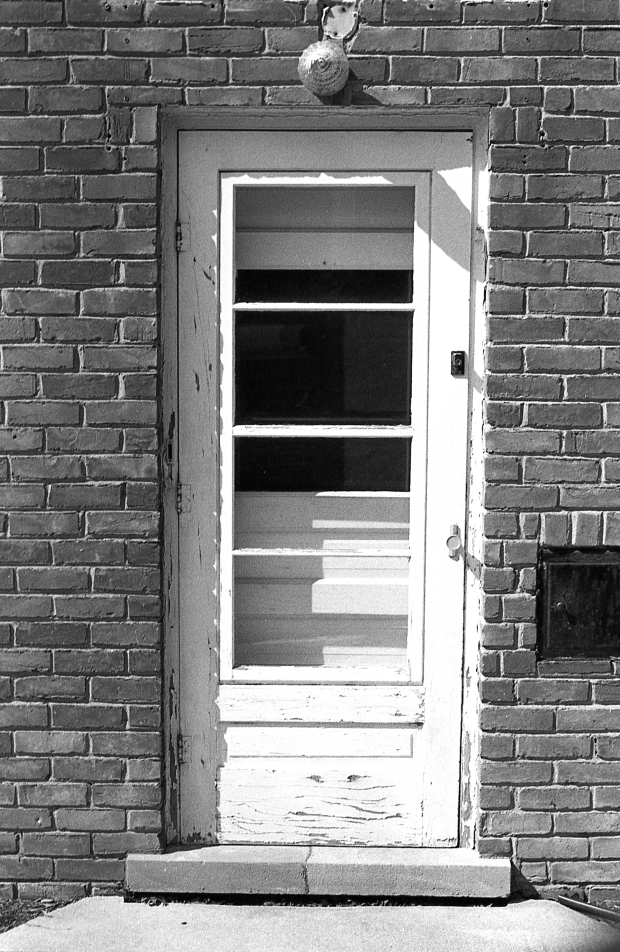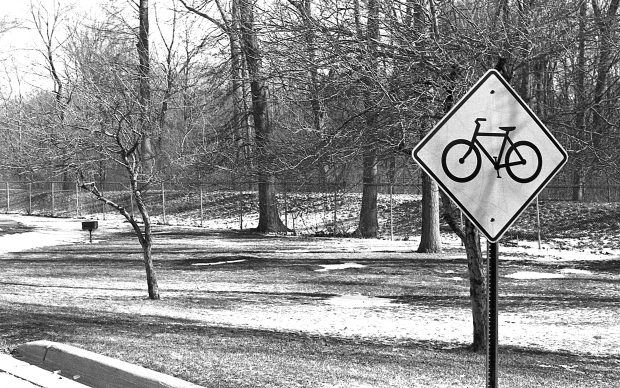
A true beauty, the Minolta X-700 was a state-of-the-art camera back in the 1980s.
For nearly two decades, from 1981-1999, the timeless Minolta X-700 ruled the roost in the Minolta stable, offering consumer-and-professional-level photographers a camera suited for just about any photographic need — a fact that continues to this day for film shooters.
With program auto-exposure mode, TTL flash metering and state-of-the-art technology for the day, the X-700 quickly became a photographer’s staple back then, rivaling Canon’s A-1 and AE-1 models in both popularity and functionality, and is still a preferred tool amongst many 35mm film shooters even today.
Now, I’d heard a lot about it, read a lot about it, and watched more YouTube videos than I should have about this classic camera. It wasn’t until recently, however, I actually got one in my hands.
After a clean-up and tune-up in the shop, I loaded up a roll of Ilford HP5+ and set off to local parks, downtown areas and just around town— running this body through the paces with the Minolta Rokkor MD 50mm f/1.7 lens firmly attached.
After 36 shots in the freezing cold that day, one thing as clear — the Minolta X-700 is the gateway drug of analog photography.
To me, it’s the perfect camera for photographers looking to delve into the world of film photography, especially those who have lived in the digital realm since the first day they picked up a camera.

The metering on the X-700 is accurate and intuitive.
The focus is wonderful through the standard matte focus screen (other screens are available, but rare), complimented by a bright and vivid viewfinder, with LED lights illuminating pieces of information to the photog necessary for an ideal exposure.
The three exposure modes are rockstars, in my opinion, of the analog photography world.
Manual exposure, which allows the photographer to set both the shutter speed and aperture settings.
Aperture Priority, which allows the shooter to set the aperture setting and the camera’s brain takes over from there with shutter speeds.
Program mode (MPS, Minolta Program System), which allows the photographer to focus on composition and focusing alone. There is a caveat to Program Mode, however. The aperture must be set to f/22 and locked in before the mode is functional, and, the shooter has no idea of the f-stop setting while shooting in this mode. It’s not a deal-breaker, but it is irritating for those who care about depth-of-field.
Myself, as dynamite and accurate as the MPS mode system is, I prefer Aperture Priority. It just gives me some sense of control of the exposure and I enjoy that part of shooting.
That said, the MPS mode is crazy-accurate and perfect for photographers just dipping their toes into the dark, deep waters of film photography.
Despite all the wonderful facets of the X-700, there are a few issues.
 First, we’ve brought in four in the past two months to the shop, only one came in without some kind of electrical issue. Minolta worked hard to cut costs on this camera, thus making it competitive with other consumer-level models from Canon and Nikon, for example.
First, we’ve brought in four in the past two months to the shop, only one came in without some kind of electrical issue. Minolta worked hard to cut costs on this camera, thus making it competitive with other consumer-level models from Canon and Nikon, for example.
The marvelous metal construction of earlier Minolta models was ditched for plastic. The vertical mega-speedy metal shutter of older model Minoltas was scrapped for a more traditional horizontal cloth shutter. This may not seem like a big deal, but it limits the sync speed to 1/60th of a second — an issue for those who rely on flash.
The entire body is now plastic as well. Don’t get me wrong, the construction of the X-700 is still very sturdy and very good, but keep in mind that plastic is still plastic and can be broken with a good fall or drop. And, it doesn’t have that metal-body vintage-camera patina so many film shooters love.
Of the faults, however, the complete reliance on electronics (a battery) to function is the one that bothers me the most. Like I mentioned earlier, we had three bodies come into the shop with electrical issues, two were repairable but a pain nonetheless, the third was beyond repair. If you’re looking for an X-700, make sure it’s been tested and fully functional. Unlike many mechanical models, a DIY repair on the X-700 body is a tall order.
Still, all things considered, the Minolta X-700 is a wonderful and enjoyable camera to shoot, particularly for digital photographers looking to add their first film camera to the bag. It highly recommend it to anyone who loves photography.
